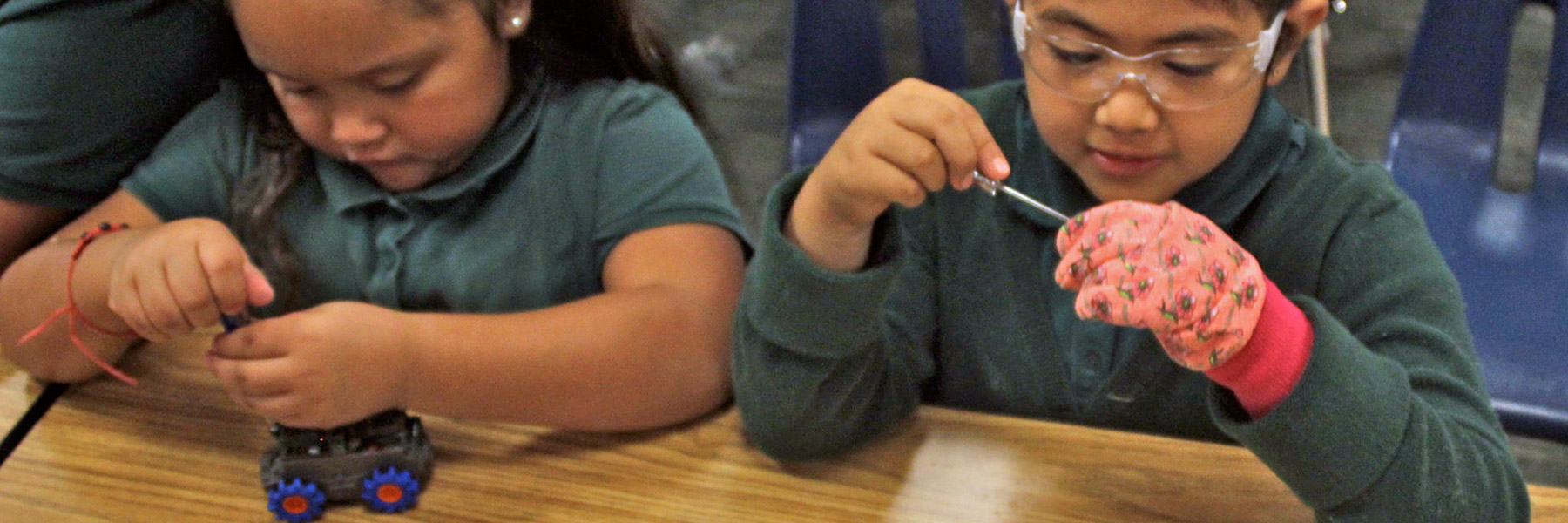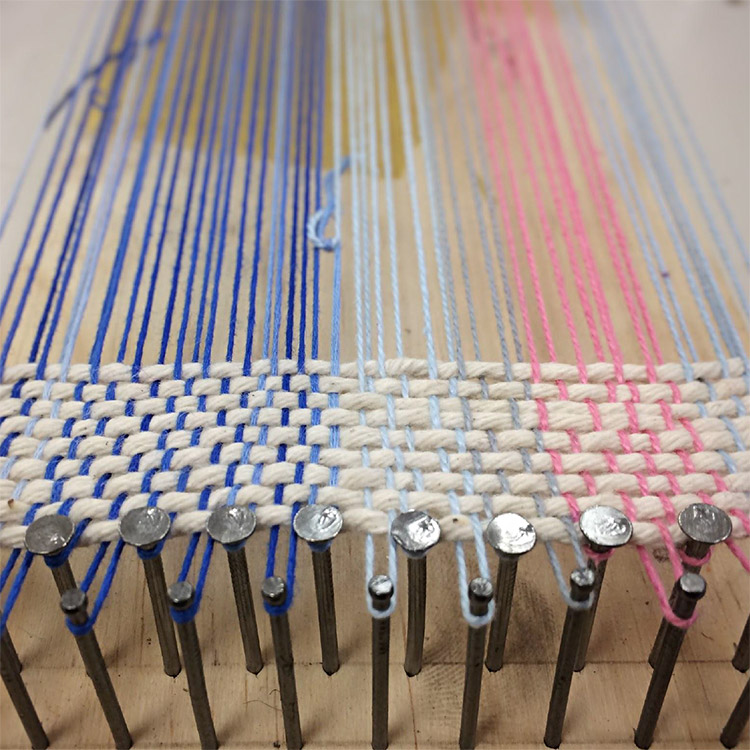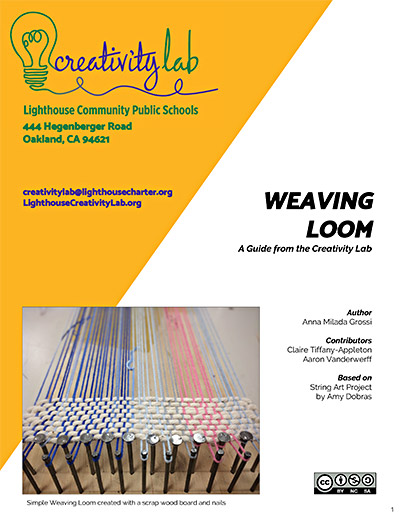
Project Guide: Weaving Loom
Adaptable to different grade levels and materials, from cardboard to wood and nails, scraps to fabric, conductive thread and LEDs.

Weaving is a versatile technique that can be adapted to different grade levels and different materials, from cardboard to wood and nails, scraps of fabric, conductive thread and LEDs. It is one of the oldest surviving crafts, and is now at the forefront of wearable technology as it is highly customizable in terms of materials and weaving techniques used. It can reach different levels of complexity, so it is suitable for a range of grades. Creating a loom is low-cost (scrap and recycled materials can be used) and easy, provided a bit of patience is used. This guide will introduce weaving using a basic wooden loom and a plain weave.
Weaving is an ancient technique and has historical, artistic and political connections. The oldest examples are from the Paleolithic era. In the Americas, the first textiles date back to 1,100 BC. During the Industrial Revolution in Britain, weavers (Luddites) revolted against low wages and poor working conditions, brought on by mechanized looms. In the Southwest USA, textile craft was important within Pueblo, Zuni and Ute tribes.
There is an array of myths, tales and cultural connotations linked to weaving that can be explored in each class (e.g. identity, symbolism etc.).



